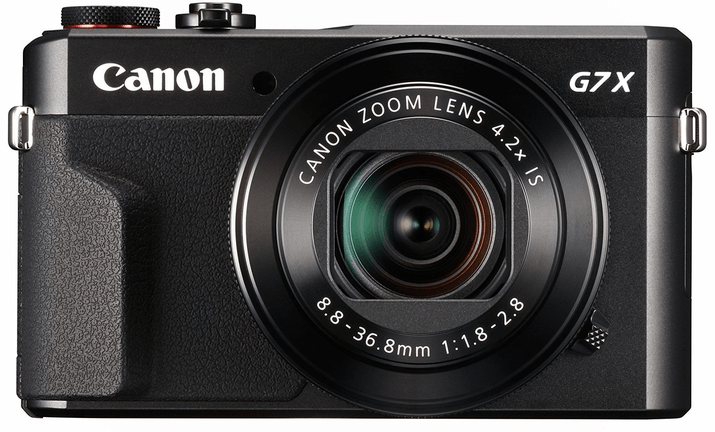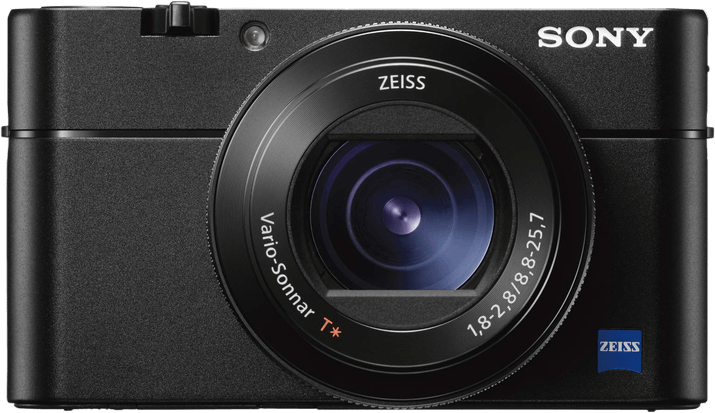Canon PowerShot G7 X Mark II vs Sony Cyber-shot DSC-RX100 VA Comparison
Canon PowerShot G7 X Mark II

Sony Cyber-shot DSC-RX100 VA

The Canon PowerShot G7 X Mark II and the Sony Cyber-shot DSC-RX100 VA both scored 59/100 in our comparison. These compact cameras have some similarities, such as their 2016 and 2018 release years, and their camera sizes – 106 x 61 x 42mm for the Canon and 102 x 58 x 41mm for the Sony. They also have a difference in launch price, with the Canon priced at $699 and the Sony at $999.
The Canon G7 X Mark II has a slightly larger size and weighs more at 319g compared to the Sony’s 299g, which could be seen as a downside. However, its lower launch price makes it a more affordable option.
On the other hand, the Sony RX100 VA is newer and lighter while maintaining a compact size. This may be attractive to some users, but its higher price could be a deterrent.
Both cameras have their pros and cons, with the Canon offering a more budget-friendly option and the Sony being a newer, lighter choice. Ultimately, the decision depends on the user’s preferences and budget.
Canon PowerShot G7 X Mark II vs Sony Cyber-shot DSC-RX100 VA Overview and Optics
The Sony Cyber-shot DSC-RX100 VA outperforms the Canon PowerShot G7 X Mark II in optics with a score of 64/100 compared to the Canon’s 58/100. Both cameras possess common features, such as 20-megapixel resolution, CMOS sensor type, 1″ sensor size, and a fixed lens mount.
The Sony RX100 VA surpasses the Canon G7 X Mark II in several ways. Its shooting speed of 24 frames per second is thrice as fast as the Canon’s 8 frames per second, allowing for better capture of fast-moving subjects. Additionally, the Sony camera boasts image stabilization, which the Canon lacks. This feature helps minimize camera shake and results in sharper images, particularly in low-light conditions or when using longer focal lengths.
On the other hand, the Canon G7 X Mark II edges out the Sony RX100 VA in one aspect: its DXOMARK sensor score of 79, which is higher than the Sony’s 70. This suggests that the Canon’s sensor performance, including aspects such as color depth, dynamic range, and low-light capabilities, is superior to the Sony’s. However, it is essential to consider that the overall optics score is still in favor of the Sony camera.
In comparing the optics of the Canon PowerShot G7 X Mark II and the Sony Cyber-shot DSC-RX100 VA, the Sony model emerges as the better option due to its faster shooting speed and image stabilization feature. While the Canon camera has a marginally higher DXOMARK sensor score, the Sony RX100 VA’s advantages make it the more suitable choice for capturing high-quality images.
Canon PowerShot G7 X Mark II vs Sony Cyber-shot DSC-RX100 VA Video Performance
The Sony Cyber-shot DSC-RX100 VA outperforms the Canon PowerShot G7 X Mark II in video capabilities, with a score of 77/100 compared to the Canon’s 70/100. Both cameras share some common video specifications, but the Sony’s features ultimately make it the superior choice for video recording.
Both cameras have a maximum video resolution of Full HD and time-lapse functionality built in. However, the Sony RX100 VA offers 4K video resolution and a higher maximum video dimension of 3840 x 2160. This means that the Sony camera can capture videos in a much higher quality than the Canon G7 X Mark II, which has a max video dimension of 1920 x 1080.
The Sony RX100 VA also boasts a higher maximum video frame rate, reaching 120fps, while the Canon G7 X Mark II can only achieve 60fps. This advantage allows the Sony camera to record smoother slow-motion footage and capture fast-moving subjects with greater clarity.
While the Canon G7 X Mark II does not surpass the Sony RX100 VA in video capabilities, it still offers respectable features and is a solid choice for casual videographers. Its built-in time-lapse functionality is a convenient feature that the Sony camera lacks.
In comparing the video capabilities of the Canon PowerShot G7 X Mark II and the Sony Cyber-shot DSC-RX100 VA, it is clear that the Sony camera is the superior choice for those seeking high-quality video recording. The Canon camera remains a good option for casual users, but the Sony’s 4K resolution and higher frame rate make it the standout choice for serious videographers.
Canon PowerShot G7 X Mark II vs Sony Cyber-shot DSC-RX100 VA Features and Benefits
The Canon PowerShot G7 X Mark II outperforms the Sony Cyber-shot DSC-RX100 VA in features, with a score of 70/100 compared to the Sony’s 57/100. Both cameras share some common specifications, making them comparable in certain aspects. They both have a 3-inch screen size, touchscreen capabilities, flip screens, GPS absence, and WIFI connectivity.
The Canon G7 X Mark II excels with its added Bluetooth functionality, which the Sony RX100 VA lacks. This feature allows users to connect and transfer files more conveniently, enhancing the overall user experience. The inclusion of Bluetooth in the Canon G7 X Mark II makes it a more versatile and user-friendly option, contributing to its higher feature score.
On the other hand, the Sony RX100 VA offers a higher screen resolution of 1,228,800 dots, compared to the Canon G7 X Mark II’s 1,040,000 dots. This advantage provides users with a clearer and more detailed display for image and video playback, as well as camera settings. However, this single advantage does not outweigh the benefits offered by the Canon G7 X Mark II.
Taking into account each camera’s strengths and weaknesses, the Canon PowerShot G7 X Mark II emerges as the superior choice in terms of features. Its added Bluetooth functionality enhances connectivity options, while the shared specifications with the Sony RX100 VA ensure that it remains a competitive choice. The Sony RX100 VA’s higher screen resolution is noteworthy, but not enough to surpass the Canon G7 X Mark II’s overall feature superiority.
Canon PowerShot G7 X Mark II vs Sony Cyber-shot DSC-RX100 VA Storage and Battery
The Canon PowerShot G7 X Mark II outperforms the Sony Cyber-shot DSC-RX100 VA in storage and battery, with a score of 29/100 compared to the Sony’s 13/100. Both cameras share common specifications, such as having one memory card slot and accepting SD, SDHC, and SDXC memory cards. However, the Canon camera also supports UHS-I compatibility, while the Sony camera accommodates Memory Stick Duo, Pro Duo, and Pro-HG Duo cards.
The Canon G7 X Mark II has a longer battery life, offering 265 shots compared to the Sony RX100 VA’s 220 shots. Additionally, the Canon camera uses an NB-13L battery and provides USB charging, whereas the Sony camera uses an NP-BX1 battery and lacks USB charging capabilities.
Despite these differences, the Sony Cyber-shot DSC-RX100 VA’s support for Memory Stick cards may appeal to some users who prefer this format. However, the Canon PowerShot G7 X Mark II’s longer battery life, USB charging, and UHS-I compatibility make it a superior choice in terms of storage and battery performance.
Canon PowerShot G7 X Mark II vs Sony Cyber-shot DSC-RX100 VA – Our Verdict
Are you still undecided about which camera is right for you? Have a look at these popular comparisons that feature the Canon PowerShot G7 X Mark II or the Sony Cyber-shot DSC-RX100 VA:
- Canon PowerShot G7 X Mark II vs PowerShot G7 X Mark III
- Canon EOS R50 vs Sony Cyber-shot DSC-RX100 VA
- Canon PowerShot G7 X Mark II vs Nikon Coolpix B500
- Sony Cyber-shot DSC-RX100 VA vs Cyber-shot DSC-RX100 VII
- Canon PowerShot G7 X Mark II vs Sony a6100
- Canon PowerShot G7 X Mark II vs Sony Cyber-shot RX100 IV
